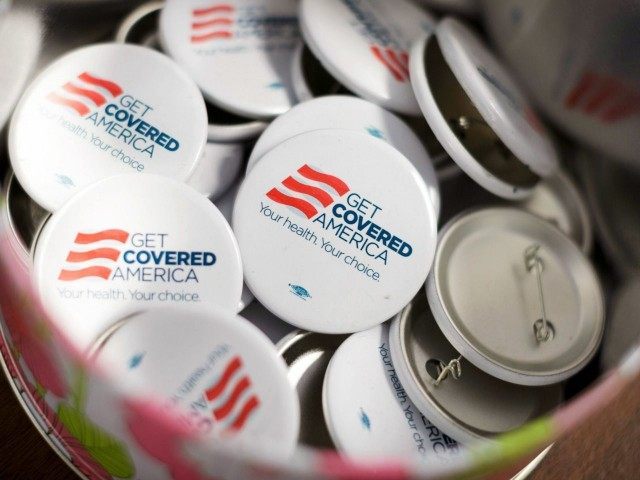The Centers for Medicare and Medicaid Services (CMS) says the cost of Obamacare’s benchmark plans will increase by 7.5 percent starting in January 2016.
The “Affordability Snapshot” published Monday by CMS tracks the change in the cost of the 2nd-cheapest silver plan—known as the benchmark because it sets subsidy rates for the marketplace—in each of the 37 states covered by the federal health exchange.
In most states, the cost is going up, though the increase varies dramatically from Alaska (31.5 percent) and Montana (34. percent) to Florida and Michigan (both 1.2 percent). In a handful of states—Indiana, Maine, Mississippi, Ohio—the cost of the benchmark plan will actually drop next year with the largest drop in Indiana (-12.6 percent).
However, those who stick with last year’s plan could see their rates increase substantially more than 7.5 percent. Charles Gaba, who runs a blog looking at ACA enrollment, looked at rate hikes in all 50 states (not just the 37 covered by the federal exchange) and found increases around 12-13 percent. That increase assumes everyone stays with the same plan they had last year.
Another way to look at this is that the cost of the benchmark plans is not representative of the cost increases taking place in states overall. For instance, Florida’s benchmark plan will only go up 1.2 percent, according to CMS, but the average increase for plans in Florida will be 9.5 percent next year.
So, in order to keep the annual rate increase closer to the 7.5 percent reported by CMS, consumers will need to shop for a new plan. Those who allow themselves to be auto-renewed into last year’s plan will be more likely to see double-digit premium hikes.
In addition to rate hikes, the CMS report focuses on the affordability of plans: “About 7 in 10 returning Marketplace consumers will be able to buy a plan for $75 or less in monthly premiums after tax credits in 2016.”
However, the fact that such a high percentage of Obamacare enrollees are getting large subsidies and cheap insurance is also a sign of a problem with the program. As insurance industry expert Bob Laszewski pointed out in June, “The proportion of the population that is signing up for Obamacare is concentrated in the very lowest income categories while Obamacare is obviously unattractive to everyone else.” And as CMS revealed recently, they don’t expect that to change any time soon.

COMMENTS
Please let us know if you're having issues with commenting.